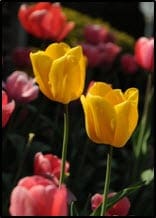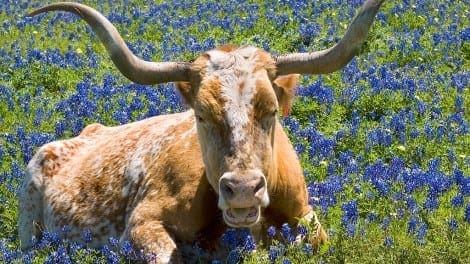DPA Magazine
Family Photography-24
Using evaluative or matrix metering, freeze a silhouette to create a timeless graphic narrative.
Flowers-6
Take lots of shots. Digital “film” is cheap. It’s easy to later weed out the culls -- and save the keepers
Flowers-5
You can pick them from your garden and bring them in, borrow them from that birthday flower arrangement or buy a small bunch from the local grocer. A piece of putty (or even chewing gum!) can secure the stem and a “busy” background of fabric placed two or three feet behind the flower can serve as a dreamy background. Indoor shooting also offers wind-less conditions, and may offer easier options in changing the angle and rotation of the flower and creative control of the light coming through a nearby window, or add an artificial light source. Create an abstract using a group of flowers. Set camera to shutter priority and select a long shutter speed (about 1/4 to 1/2 second) and try one of the following with a hand held camera: -Simply “jiggle” the camera as if you had very shaky hands, or -“Drag” the lens in a straight (or diagonal) line across the flower bed and click the shutter while the camera is moving, or -With your zoom lens at its longest position, rotate the lens barrel in and click the shutter during that movement, or -If your camera has a multiple exposure feature, turn it on and rapidly take a number of shots, moving the camera slightly between each shot.
Flowers-4
Outdoors, watch out for the wind (and try to block it from moving the flower, if possible). The slightest movement of the flower subject will be apparent in your image (unless a very high shutter speed is used). However, sometimes a “dreamy blur” of a moving flower can actually enhance the image! Consider using a hand-held reflector (as simple as a piece of white cardboard or gold or silver foil glued to card board) to enhance the lighting (usually from the side of) the flower opposite the main light source. This low-tech device is also handy to use as a small windbreak when held near the subject flower. The best quality of light for flower (and fall foliage) photography is overcast. Sunshine can make the flowers too contrasty and shadows harsh. Under a bright sun, consider using an umbrella or something similar to create shade.
Flowers-3
Is there something interesting (e.g. a fern or another, nearby flower) that you’d like to be in focus or that you want out of focus? If the former, use a small (f16) aperture. If the latter, use a large aperture (f2.8). . A slight shift in the position of the camera can help create a “stacking” effect of blurred blossoms in front of and/or behind the flower in sharp focus. And, such a slight shift can eliminate a distraction from the background. If there’s a lot of green foliage in the shot, it often shows best with about a -2/3 exposure adjustment. The best camera angle is usually to get low—close to the level of the flower. Shots from too far above, “looking down” at the flower, are seldom compelling. Shots made from the level of the blossom, or even on your belly or your back (looking up) can often be more dramatic. Or, try laying the camera on its “back,” with the lens pointing skyward, among some flowers and capture the “worm’s-eye view” of the underside of the flower against the sky (pre-focus and then use the camera’s self-timer for this and dial in a “minus” exposure adjustment to under expose since the bright sky may tend to “fool” the camera’s internal meter).
Flowers-2
This helps “separate” the subject from the background, rendering a blurred background. Or, try a “macro lens,” extension tubes or a quality “close-up filter” to achieve close focus. Before “settling in” and going for your great shots of that flower, take several quick test shots and review them on your camera’sLED screen to be sure you’ve got the exposure correct and you’ve got just the right amount of blur or sharpness that your seeking with regard to your subject and to the elements in the foreground or background. Then, fine tune your adjustments, perhaps retest again, and then go for it! Focus carefully on the flower (or the precise part of the flower) that you want to be tack sharp. It’s best to turn off the “auto focus” feature and manually focus until your eye confirms that the spot you want to be sharp is now in focus. Or, set your camera’s auto focus control to a single point and be sure that point is on the part of the flower that you want sharpest when you press the shutter.
Flowers-1
In either mode, select an aperture for the amount of depth of field you desire for the shot: - Use a wide aperture (e.g. f2.8 or f4) for shallow depth of field to blur the area in front of and in back of the subject. - Use a small aperture (e.g. f16 or f22) for deeper depth of field so that foreground and/or background object remain sharp (or somewhat sharper) To avoid "camera shake" spoiling your image, try: - Using a fast shutter speed (1/500 or even faster), or - Using a tripod, or if not available, bracing the camera against some object (e.g. fence post), or - Setting your shutter to the "burst" setting, which fires off several frames rapidly when you depress the shutter (often one or more fraes of the burst will be sharp). Consider adjusting the ISO setting to achieve the aperture/shutter speed combination you desire. Remember the "triangle" (the interdependent relationship) between ISO, shutter speed and aperture.
Be Mindful
Be Mindful © Joe Robbins Most important aspect of shooting these guys is plan ahead for a quick escape, should you need it. Don't push your luck. Stay your distance. Use a longer lens. Move slowly. © Joe Robbins
A More Personal Vantage Point
If there is one thing out there that is photographed heavily, it is our pets. Every pet owner from Aunt Sally to your neighbor Chris all take pictures of there pets, the trick is to do it better then every one else! I love animals, always have always will. But if there is one thing that gets me, it's the same cliche photo of someone's cat or cute dog taken 30-feet away from a high view point. Why, because that's where the photographer was standing when they saw their pet playing with a ball of yarn or a butterfly. Well folks it's time break that habit, I mean - they are your pets - they know you! Get in there and get personal! My main tip for this situation is get on there level don’t always photograph from the standing up perspective, or bird's eye view. One sure way to make a picture better is get on the same level as the subject you are photographing. Here is my 14-week-old puppy, Jiro, enjoying the summer sun in my living room. For this picture, I got on the ground and zoomed in with a 200mm lens to get a shot of him relaxing. Very simple and yet very effective.
Nearby Sites
The cars are just about the only reference to urbanization, aside from what is sold in the stores, but the stores are in the old buildings so everything blends well. And there are no Gap, Banana Republic, Barnes & Noble franchises. We found a car that was slightly larger to use for our day trips. I am not sure I can fit in one this size, but all the townspeople seem to. We will have larger sedans, with drivers, who know the area and the back roads. One of the photogenic settings that is a quick ride from Viterbo, in this case about an hour, is Pitigliano, where a synagogue was once the center of the Italian jewish community. It included a slaughter house where Rabbi’s made sure that the process was kosher, a bakery for making matzoh, a school and every other service needed for a thriving culture to be maintained. There was harmony in the city, amongst jews and non-jews, until the Romans came and drove the jews to a ghetto outside of the city border. Christians came to the aid of the oppressed people, overpowered the Romans, and all was restored. Over the centuries though, the synagogue and its complex of services and goods were abandoned but now all is restored magnificently. Photo Ops abound. We will bring in models to accessorize the walk way and allow silhouettes that create an elaborate narrative. The wall just as we entered Pitigliano where the stores offer a variety of still life portraits as well as images of the people who work there. The wall, as many others, is a photo op in and of itself. Imagine the Etruscan ruin nestled amongst the foliage of a thousand hues when the change of season is happening during our visit. The town is a bit hilly, making for many interesting angles from which to photograph. (Good exercise as well.) A good thing that your digital SLR will allow you to delete because you will want to make photos every step of the way. In the evening you can make your final decisions when we are talking about choices in editing to make a cohesive portfolio. Everywhere you point your camera you see only traces of the past. No worries about a GAP Sign interfering with the shot. Sometimes stairs themselves are the photo op and other times it is where they lead to. The view from one of the several museums, a casual looks out on an old castle. The windows open and frame the view. The city is lit for evening activities and offers a different kind of photo op. As we made our way up to the country farm.. Its the country farm that Gianluca invited us to. He picked us up at our hotel and we drove for about 20 minutes, to an old dirt road. After about a ½ mile, we came upon the “country farm” with a swimming pool, an orchard of olive trees and the house that was refurbished for parties and casual weekends. The entire 40 acres overlooked a spectacular expanse, peppered with structures that have been there for centuries and centuries. This is the view from the “country farm.” The two girls are our daughters, Sally and Eve. During change of season, the view will come alive. A 10 minute drive from Viterbo is Belvedere su Lago. When we visit, there will be hand gliders that launch from this spot and the foliage and trees below will be the colors of fall, adjacent to a placid lake off to the left. Picture the bright colors of the gliders in their flying contraptions, set against the panorama off to the distance. There’s the lake. After visiting the lake where we will photograph the gliders, we stopped here on our way back to Viterbo for a tour of the architecture. We spent a lovely afternoon here. This is what the area must have looked like back in the 13th century. When the Popes, elites and other aristocrats lived in Vitebo, from the 11th to the 14th century, it was the place to be and so wealthy patrons build gardens, castles and curious tributes to their loved ones. We will bring models here as well as to other sites for our photo shoots.





